Differences Between Cetirizine and LevocetirizineIntroductionSecond-generation antihistamine medications cetirizine and Levocetirizine treat allergies, hay fever, and urticaria. (hives). These drugs prevent the effects of histamine, a substance the body releases in response to an allergic reaction. Cetirizine and Levocetirizine help to lessen symptoms, including sneezing, runny nose, itching, and watery eyes by inhibiting histamine. While the brand-name drug Xyzal contains Levocetirizine as its active component, the generic Zyrtec contains Cetirizine. Both medicines can be purchased over the counter and with a prescription; they are commonly ingested as tablets or liquids. The Chemical Structure:Both the antihistamines cetirizine and Levocetirizine are categorized as second-generation H1-receptor antagonists. However, their chemical makeup is different. Cetirizine is a racemic combination that equally distributes the molecule's two mirror-image isomers (enantiomers). The active form of Cetirizine exists in one of these isomers, while the inactive form exists in the other. ()-2-[2-[4-[(4-chlorophenyl)phenylmethyl]-1-piperazinyl]ethoxy]acetic acid is the chemical name for Cetirizine's active form. Levocetirizine, on the other hand, is the active enantiomer of Cetirizine. It only contains R-cetirizine, which is the active isomer of Cetirizine. R-(+)-2-[2-[4-[(4-chlorophenyl)phenylmethyl]-1-piperazinyl]ethoxy]acetic acid is the chemical name for Levocetirizine. Levocetirizine and Cetirizine have different chemical structures, making Levocetirizine a more effective antihistamine with a longer half-life and fewer adverse effects. Additionally, it is thought to be more successful in treating chronic urticaria and allergic rhinitis. 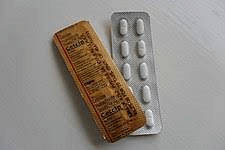
Brand Name Examples:Both Cetirizine and Levocetirizine are available under different brand names around the world. Here are some examples of brand names for each of them: Brand name examples of Cetirizine:
Brand name examples of Levocetirizine:
It's crucial to remember that these brand names could change depending on the nation or region, and other brand names might be available that need to be listed here. These are only a few of the numerous brand names each medication has. Approved Uses:Both the antihistamines cetirizine and Levocetirizine are used to treat similar ailments like allergies, hives, and itching. They might, however, have slightly different approved uses in various nations. These are a few instances of their permitted uses: Approved uses of Cetirizine:
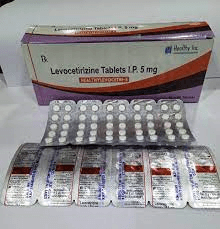
Approved uses of Levocetirizine:
It's important to remember that these are only a few legitimate uses for each drug. It would also help to always speak with your healthcare provider before taking any medications because the permitted uses may change depending on the nation or region. Dosage Form:Several dosage forms of Cetirizine and Levocetirizine, including tablets, capsules, and syrups. Nevertheless, depending on the nation or region, there might be variations in the dosage forms offered for each medication. Here are some illustrations of dose forms for each drug: Dosage forms of Cetirizine:
Dosage forms of Levocetirizine:
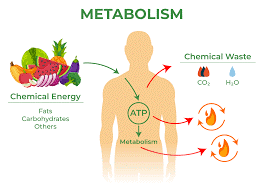
It's vital to remember that any prescription may have different dose forms available based on the nation or location. A healthcare professional should also choose the correct dosage form and strength and will consider the patient's age, weight, and medical history. Dosage Frequency:Cetirizine and Levocetirizine are commonly used once a day to treat allergic disorders. Nevertheless, the suggested dosage schedule may change based on the patient's age, weight, and health. Here are some broad recommendations for how frequently each drug should be taken: Dosage frequency of Cetirizine:
Dosage frequency of Levocetirizine:
It's crucial to remember that the dosage and frequency of these medications can change based on the requirements and health of each patient. Patients should also follow their healthcare provider's recommendations for dosage and frequency and always check with them before taking any medications. Dosage for Children and Adults:Cetirizine and levocetirizine doses for children and adults may differ based on age, weight, and medical condition. Here are some general recommendations for each medication's ideal dosage for both children and adults: Dosage for children:
Dosage for adults:
Remembering that the correct dosage may change depending on the patient's specific requirements and health is crucial. Therefore patients should always speak with their doctor before taking any medications. Patients should also adhere to their doctor's dosage and frequency recommendations. 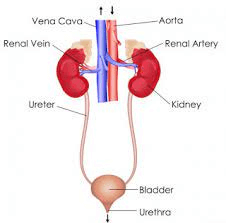
The Onset of Action:The speed at which a medication starts to operate after being taken is called the beginning of the Action. The effects of Cetirizine and Levocetirizine often manifest one to two hours after administration, making them both thought to have a reasonably quick onset of Action. However, the timing of the commencement of Action may differ based on the characteristics of each patient and the severity of the allergic reaction being treated. Sometimes it may take more time for the medication to start working. Therefore, patients should always adhere to their doctor's dosage and frequency recommendations to get the most out of the drug. Duration of Action:The time that a medication's effects last after being taken is referred to as its duration of Action. The impact of Cetirizine and Levocetirizine remains for around 24 hours after administration, which is a reasonably long duration of Action. However, depending on the particular patient variables and the severity of the allergic reaction being treated, the course of Action may vary. To maintain maximum effectiveness, patients may occasionally take additional doses of the drug during the day. To achieve the best possible efficacy of the drug, patients should always adhere to their doctor's dosage and frequency recommendations. 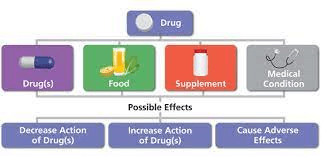
Elimination Half-Life:The time it takes for half of a medicine to be removed from the body is known as the elimination half-life. Different elimination half-lives between Cetirizine and Levocetirizine could influence how frequently they should be dosed and how long their effects will last. Cetirizine has an elimination half-life of about 8 hours in adults, meaning it takes about 8 hours for half of the drug to leave the body. Because of the comparatively lengthy half-life, a once-daily dosage is possible. Like Cetirizine, Levocetirizine has an elimination half-life of 7 to 10 hours in adults. For the majority of patients, this enables a once-daily dosage. It's crucial to remember that the elimination half-life may change depending on a patient's unique characteristics, including age, weight, and medical history. To achieve the best possible efficacy of the drug, patients should always adhere to their doctor's dosage and frequency recommendations. Metabolism:Hepatic metabolism is a procedure in which Cetirizine and Levocetirizine are metabolized in the liver. A process known as cytochrome P450 3A4 (CYP3A4) is responsible for most of both medications' metabolism, with other pathways like CYP2D6 only accounting for a minor portion of the total. Less than 10% of the medication, Cetirizine, is unchanged and eliminated in urine due to substantial liver metabolism. Desmethylcetirizine, which has some of the Cetirizine's pharmacological properties but is less effective, is the drug's primary metabolite. Less than 10% of the drug is eliminated unaltered in the urine due to substantial liver metabolization of Levocetirizine. Desmethylcetirizine, another major metabolite of Levocetirizine, has a similar pharmacological effect to Levocetirizine but is less intense. Overall, the metabolism of Cetirizine and Levocetirizine is comparable, and the parent drug's metabolites have many of the same pharmacological properties as their metabolites. The effectiveness of the medications or their potential for side effects may vary depending on the patient's ability to metabolize them effectively. Patients should always adhere to their doctor's dose and administration recommendations to ensure that the drug works as well as possible. Excretion:Cetirizine and Levocetirizine are predominantly eliminated in the urine, with a trace quantity passing through the feces. Most of both medications are removed as metabolites, with less than 10% of each drug being excreted unmodified in the urine. Levocetirizine and Cetirizine are thought to be excreted by both renal (kidney) and biliary (liver) pathways, while their specific processes of excretion are still unknown. Due to the possibility of decreased medication clearance in patients with compromised renal function, dose modifications or careful monitoring may be necessary. Drug clearance may be affected in patients with hepatic impairment as well. However, this effect is often less dramatic than the impact on renal function. Cetirizine and Levocetirizine are primarily eliminated in the urine. Thus patients with impaired renal function may need dosage changes or close observation to avoid potential toxicity. To achieve the best possible efficacy of the drug, patients should always adhere to their doctor's dosage and frequency recommendations. Common Side Effects:Both Cetirizine and Levocetirizine have relatively few adverse effects and are well-tolerated drugs. However, certain people might encounter different adverse effects between the two medications. Common side effects of Cetirizine include:

Common side effects of Levocetirizine include:
More severe adverse effects like allergic responses, hallucinations, or liver failure are rare but can occasionally occur with both medications. Patients should speak with their healthcare physician if any uncommon or severe adverse effects occur while taking these medications. Drug Interaction:Levocetirizine and Cetirizine are both considered safe medications with minimal chance of drug interactions. However, other drugs may interact with these and change how they work, increasing or decreasing their effects. Cetirizine and Levocetirizine may interact with the following medications:
Pregnancy category:Cetirizine and Levocetirizine are categorized as pregnancy category B medications. While there are no well-controlled studies on pregnant women, animal studies have not revealed any adverse effects on the fetus. Despite the lack of evidence indicating harm to a growing fetus from either Cetirizine or Levocetirizine, pregnant women should exercise caution when taking any medicine. They should speak with their doctor before using either of these. Pregnant women should, if possible, explore non-pharmacologic methods of treating allergy symptoms, such as avoiding triggers and utilizing saline nasal sprays to treat congestion. The fact that Cetirizine and Levocetirizine may be excreted in breast milk should be taken into consideration when using these drugs while nursing. Before using either of these medications, nursing mothers should speak with their doctor.
**Please note that this is just a general comparison, and you should always consult with your healthcare provider before taking any medications.** Conclusion:In conclusion, the antihistamine medications cetirizine and Levocetirizine are similar but different medications used to treat hives, hay fever, and allergies. Levocetirizine is considered a more practical variant of Cetirizine even though the two drugs share a similar chemical structure because of their greater affinity for histamine receptors. Levocetirizine and Cetirizine share many common adverse effects, dosage forms, and permitted uses. However, there are some variations in their metabolism, elimination half-life, and start and duration of the activity. Both drugs are considered secure and valuable, with a low risk of adverse drug reactions. Before taking any medication, patients should always talk to their doctor and take it as prescribed to prevent any adverse side effects or difficulties.
Next Topicdifference-between
|
 For Videos Join Our Youtube Channel: Join Now
For Videos Join Our Youtube Channel: Join Now
Feedback
- Send your Feedback to [email protected]
Help Others, Please Share










